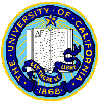Participation:
- Attendance at all lectures is expected.
- You are expected to have read the assigned reading for that date before lecture.
- You will be called upon, by name, on a few days during the quarter, and asked one question related to that lecture. If you are present and respond to the question, you will receive credit for the Participation component of the course grade.
Problem Sets:
- There will be six problem sets during the term. See the course outline for assignments and due dates.
- See the problem sets webpage for instructions on how to turn in your problem sets.
- No late homework will be accepted without documentation of a medical issue that inhibited timely work.
- Some problems on the problem set will be graded based on effort, but not on the correctness of the answer. Other problems will be graded based both on effort and on the knowledge demonstrated. It will not be announced beforehand which problems fall into which category.
- Graded problem sets will normally be returned one week after the due date. Solutions will be available online when the problem sets are returned.
Paper:
- There will be a paper to be completed during the second half of the term. It will be on a topic of your choice, based on something we cover in class. Typically, this will focus on one technology or one type of application.
- See the paper webpage for details.
Grading Policy:
Letter grades are based on the instructor's evaluation of your demonstrated performance in the course.
First, a "exam score" will be calculated using the following weighting:
- Midterm (33%)
- Final (67%)
The instructor will use his judgment to map exam score ranges into "exam letter grades". Your course grade will be within one letter grade of the exam letter grade, as follows.
Second, we will add the problem sets scores, paper score, and participation score as follows. Each problem set score will be normalized to a maximum of 100. The paper score will be normalized to a maximum of 200. The participation score will be normalized to a maximum of 100. The lowest score amongst the problem sets, 1/2 of the paper, and participation will be dropped, resulting in a maximum possible "problem set plus paper plus participation score" of 800.
Your course grade will be your "exam score", increased or decreased by up to one letter grade based on your "problem set plus paper plus participation score".
The instructor reserves the right to override this policy in individual cases where the student has demonstrated mastery of the material on the final, but this is rare.
All grades will be available through gradescope.com or eee.uci.edu.
Course Text:
Click here for instructions on how to purchase the textbook
- The textbook is:
- Computer Networking: A Top-Down Approach, James Kurose & Keith Ross, Pearson. (publisher, UCI reserve)
Reference Texts:
- Supplemental material for the Computer Networking: A Top-Down Approach textbook
- Material on the Pearson website, including PowerPoint slides from the textbook authors, interactive end-of-chapter exercises, interactive animations, and lectures from the textbook authors.
- Material on the Kurose/Ross website, including lectures from the textbook authors, PowerPoint slides from the textbook authors, and interactive end-of-chapter exercises.
- Computer Networks, Andrew Tanenbaum and David Wetherall. (publisher, UCI online access)
- Computer Networks: A Systems Approach, Larry Peterson & Bruce Davie. (publisher, UCI online access)
- Data and Computer Communications, William Stallings. (publisher, UCI reserve)
Policy on Academic Honesty:
- UCI Policy on Academic Integrity. This includes a definition of plagiarism.
- On problem sets, you are strongly encouraged to work in groups to discuss your approach to solving each problem, but you must work individually in progressing from that point toward the solution. You must turn in only your own work. Use of any solutions from any source other than a student's own work is considered plagiarism.
- Students agree that by taking this course all required papers are subject to submission for textual similarity review to Turnitin.com for the detection of plagiarism. All submitted papers will be included as source documents in the Turnitin.com reference database solely for the purpose of detecting plagiarism of such papers. Use of the Turnitin.com service is subject to the Usage Policy agreement posted on the Turnitin.com site.
Add Drop Policy:
|
